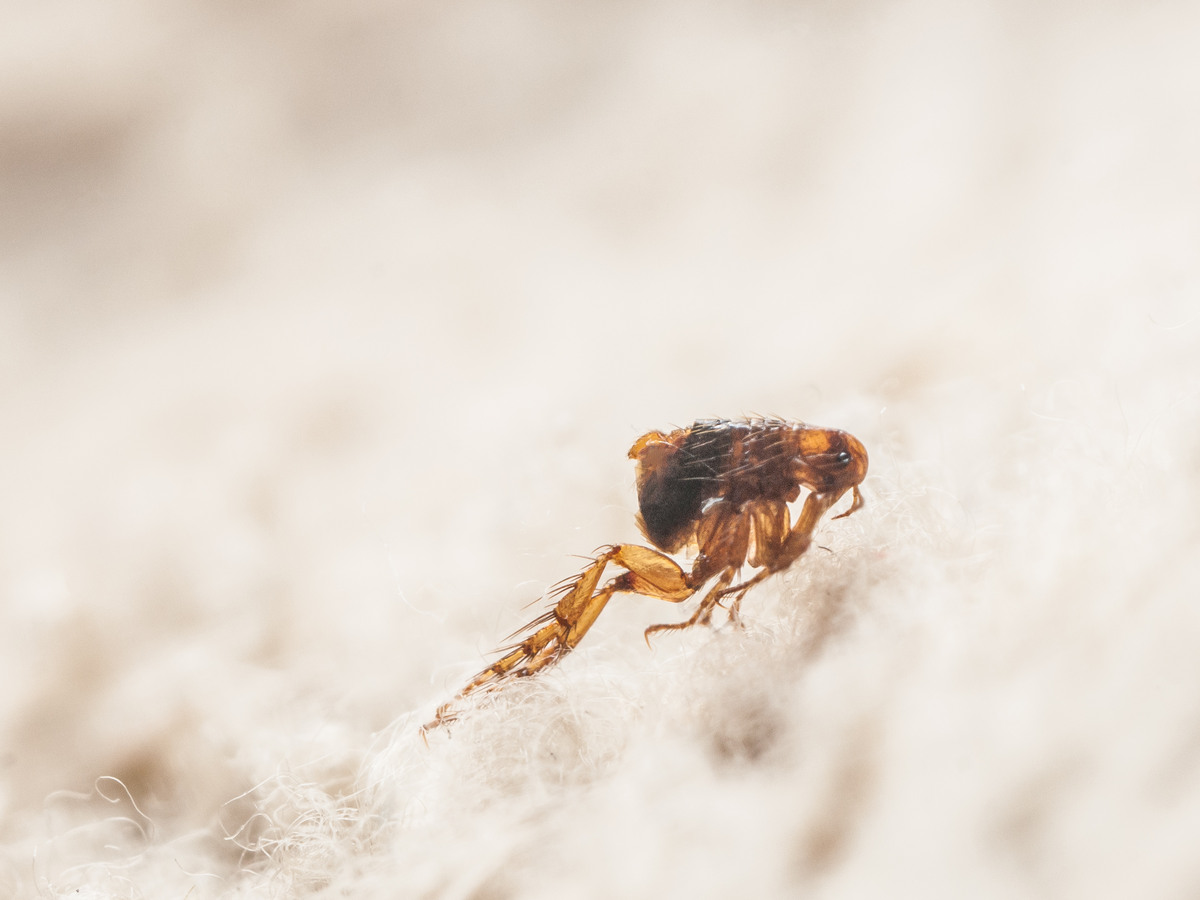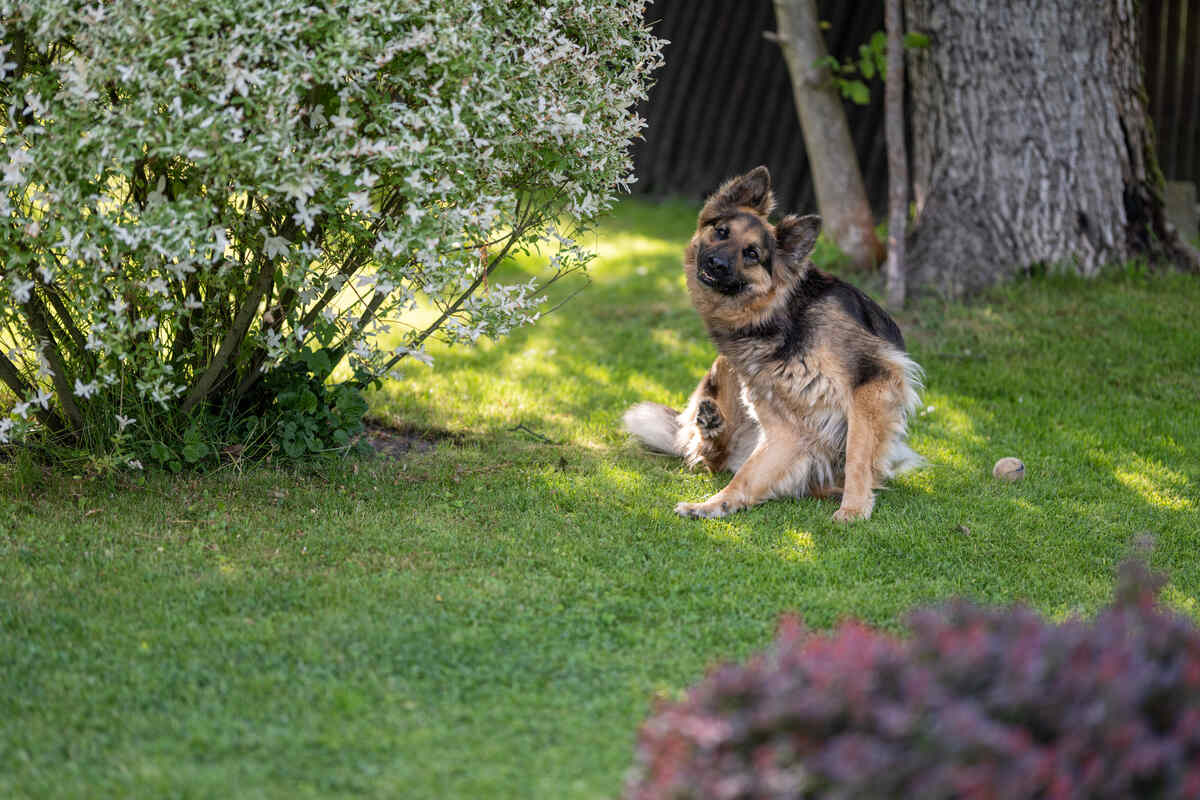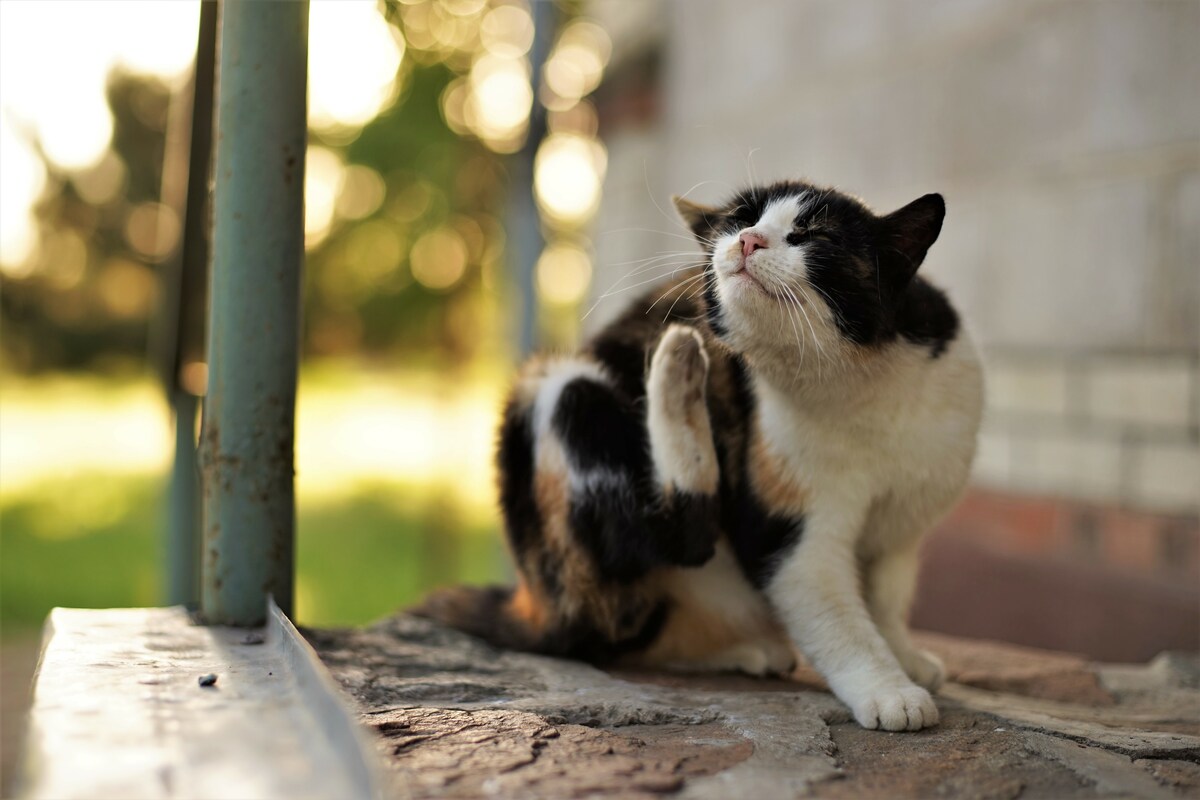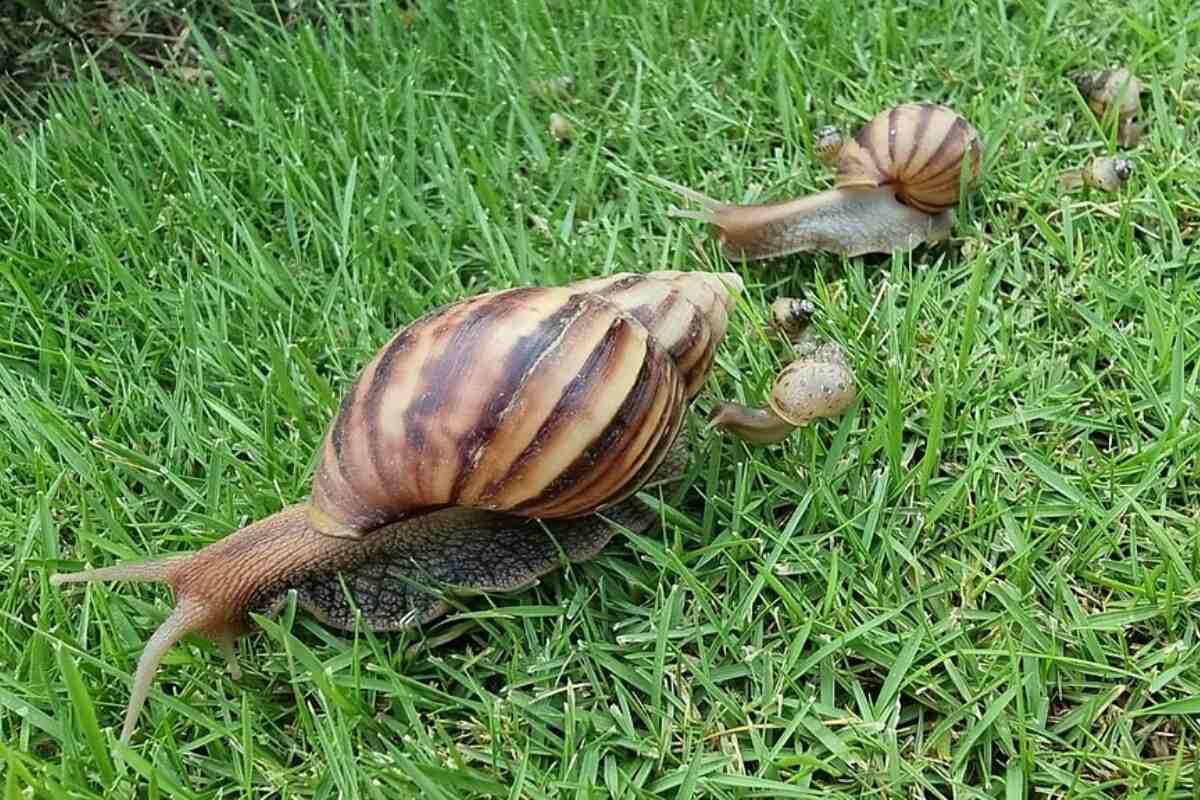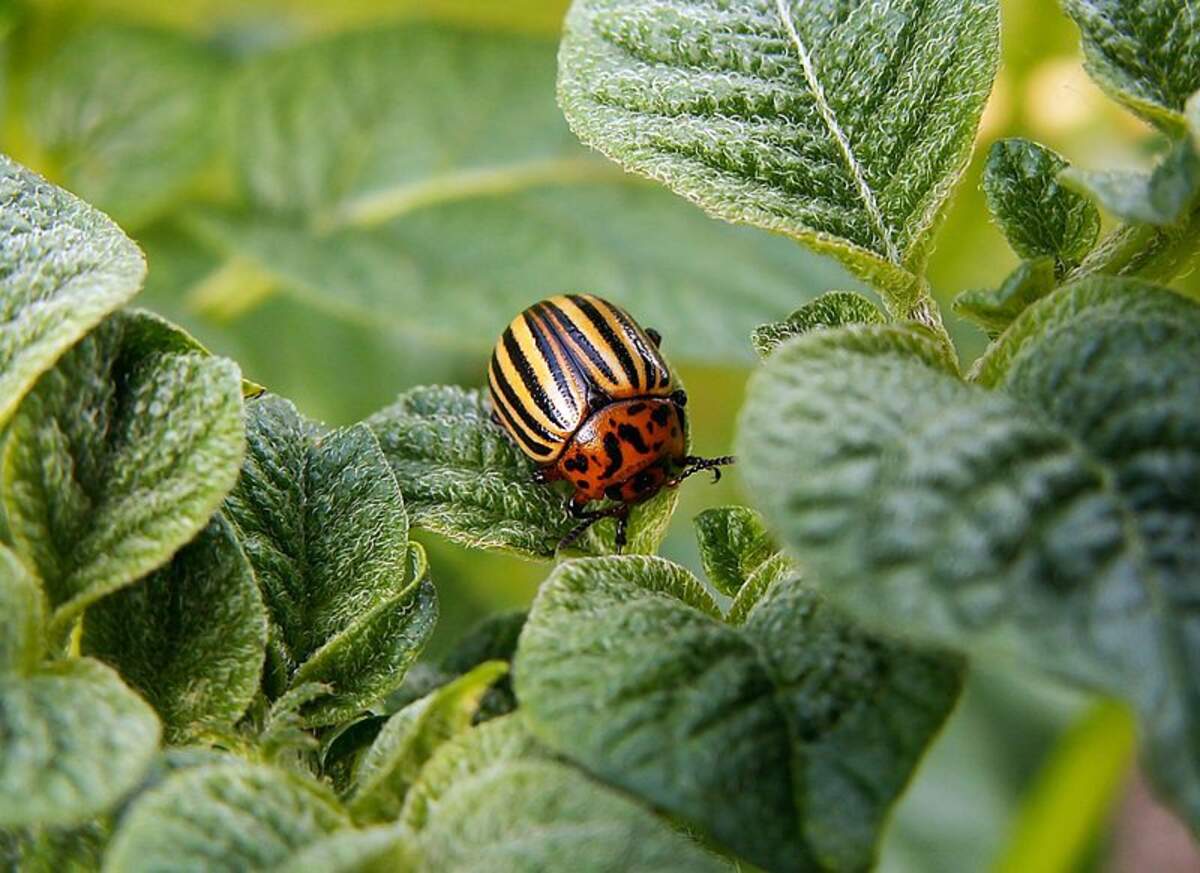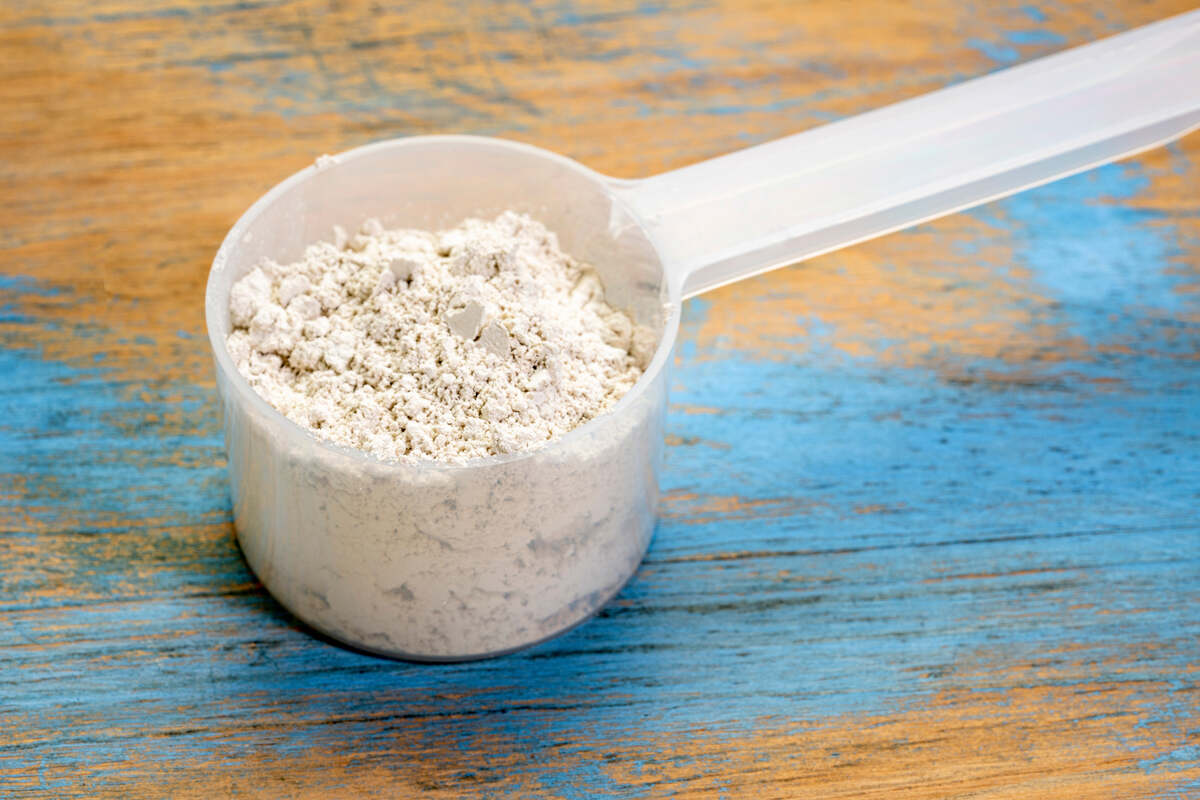
Three things are essential when using diatomaceous earth to treat fleas in your yard: dry conditions, targeted treatments, and repeated applications.
Diatomaceous earth is one of the natural flea treatments you can use to keep the yard flea-free without toxic chemicals. It’s a natural powder, only active when dry, so it’s important to apply it in dry weather and on dry soil. We tell you how to use it correctly with practical recommendations from experts in pest control and landscaping.
In this article, we cover all the details about using diatomaceous earth to treat fleas:
What is Diatomaceous Earth?
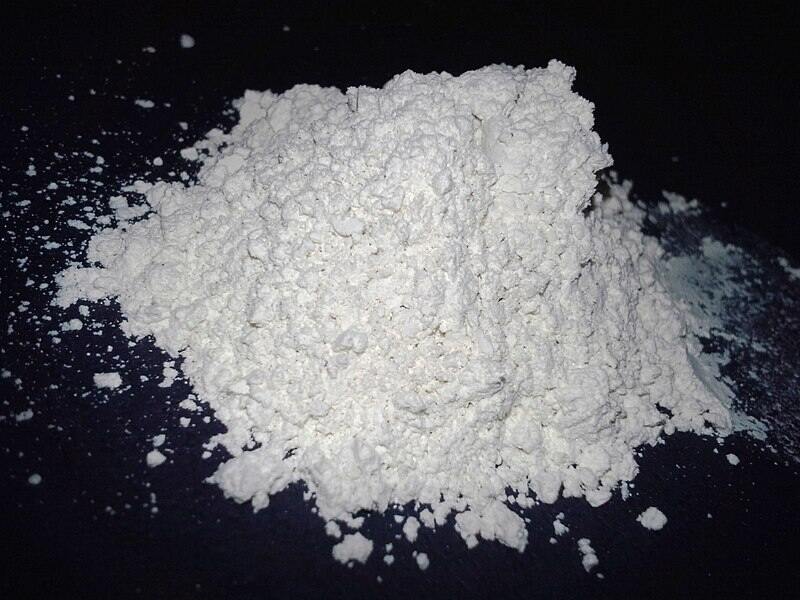
Diatomaceous earth (DE) is a non-toxic, powdery substance that can be used as a natural flea treatment.
Its natural form is a soft sedimentary rock made of the fossilized remains of tiny aquatic organisms called diatoms. This rock is mined from underground deposits and turned into granules or powder.
The DE powder is off-white, has no smell, and feels soft to the touch, like flour or talc. However, under a powerful microscope, the silica particles appear surprisingly abrasive—they have sharp edges like glass shards.
There are two types of diatomaceous earth:
- Food-grade diatomaceous earth. The FDA requires food-grade DE to be purified and contain less than 1% crystalline silica and under 10 mg/kg of lead and arsenic. It’s considered safe to be used in food processing and around the house.
- Industrial-grade diatomaceous earth is only for industrial use and can contain anywhere from 1% to 75% crystalline silica.
If you want to use it to treat fleas in your yard naturally, always choose food-grade diatomaceous earth. “Food grade” is the cleanest form and the only one to safely use around the house.
Is Diatomaceous Earth Safe to Use?
The Food and Drug Administration (FDA) lists the food-grade diatomaceous earth as “generally recognized as safe.”
Food-grade diatomaceous earth is a non-toxic natural flea treatment but is not risk-free. As with any other dust (lime, cement, etc.), the fine powder can irritate exposed eyes, nose, throat, and skin. Take some minimal precautions when using it:
- Wear safety goggles, a face mask, long sleeves, and gloves.
- Keep children and the pets away from the treated areas until the dust settles.
How to Apply Diatomaceous Earth to Kill Fleas
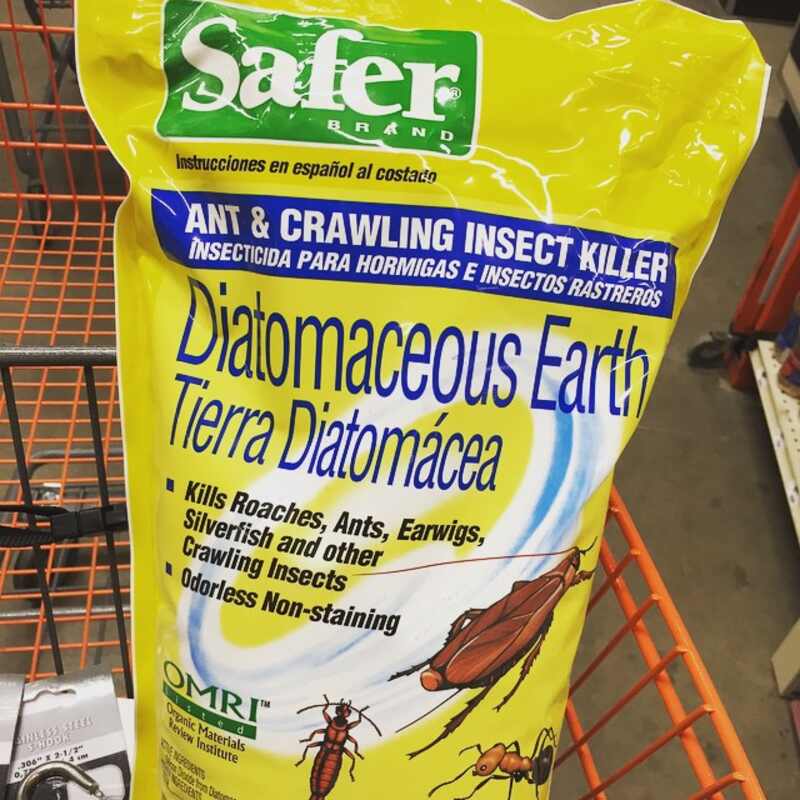
Where to apply
Targeted applications are the most effective. Find the flea-infested areas of your yard and shoot to kill.
According to Jason Napolski, president and CEO of A-Tex Pest Management, a pest control company in Austin, Texas, one of the biggest mistakes when using diatomaceous earth outdoors is applying it too broadly without considering environmental factors. With over 20 years of experience in the field, Napolski says a targeted approach is the best option.
“Many people spread DE [diatomaceous earth] over their entire yard, but it quickly becomes ineffective when exposed to rain, dew, or high humidity. DE should be strategically placed in dry, sheltered locations where insects travel, such as cracks in foundations, along fence lines, and under porches.”
To discover where you have fleas in the yard, use the white sock test:
- Put on tall white socks.
- Walk around the yard areas that attract fleas.
- Watch for fleas on your socks. Fleas feel your body heat and will jump on you for a blood meal with no hesitation. They usually land in the ankle area.
To protect pollinators, don’t apply the powder to flowers or the tops of plants where these flying insects roam. Although it is a natural flea control product that doesn’t pollute water or soil, it is not a selective insecticide and can kill beneficial insects such as bees and butterflies.
When to spread
Todd Hendricks, founder of Louisville Landscape Pros, a landscaping company in Kentucky, advises homeowners planning to use diatomaceous earth to choose the timing carefully.
“It will have a huge impact on the effectiveness of each application,” Hendricks says.
Diatomaceous earth needs dry conditions to work. The best time to use it is:
- When the soil and plants are dry
- During a windless, dry day, when you don’t expect rain in the next 24 – 48 hours.
- Early morning or late afternoon when pollinators are less active
“Check the weather forecasts, observe the conditions, check if there’s morning dew, and so on. Over time, you’ll be able to work out a steady schedule of the best time to apply DE,” says Hendricks.
How Often to Repeat Application
Hendricks says a common misconception is that diatomaceous earth should work immediately.
“People apply one layer, see that there are still pests, and then assume that the DE doesn’t work,” says Hendricks.
Diatomaceous earth can’t kill all the fleas in one application because it doesn’t attack the eggs and pupae and can not interrupt the flea lifecycle. It also can be dispersed by wind and rain. To get rid of the fleas in your yard:
- Reapply after rain, heavy dew, strong wind that disperses the powder, or irrigation.
- Make multiple applications – spread diatomaceous earth once a week for a month.
“You’ll just see that after a few weeks, the amount of pests starts to slowly decrease,” says Hendricks.
Use the white socks test to monitor for fleas in the yard. Reapply as soon as you see these parasites.
For flea prevention, you can apply diatomaceous earth about once a month in areas susceptible to harboring fleas.
How to Use Diatomaceous Earth Powder
The most effective and common application is powder. When sprinkled dry, diatomaceous earth starts harming the fleas as soon as it lands.
What you need:
- Diatomaceous earth
- Flour sifter (great for easy-to-access spots), garden duster, or puffer bottle (better for hard-to-reach areas like under the porch)
Steps to follow:
- Locate the flea-infested areas.
- Sprinkle the powder to coat in a uniform, thin layer (like sprinkling powdered sugar on a cake).
My tip: DE doesn’t work if you spread it on a surface that is always a bit damp (for me, that was a spot with clay soil under a dense shrub). The powder stays moist and has no effect. Shaded, moist spots are best treated for fleas using beneficial nematodes, which are also natural.
How to Use a Liquid Solution
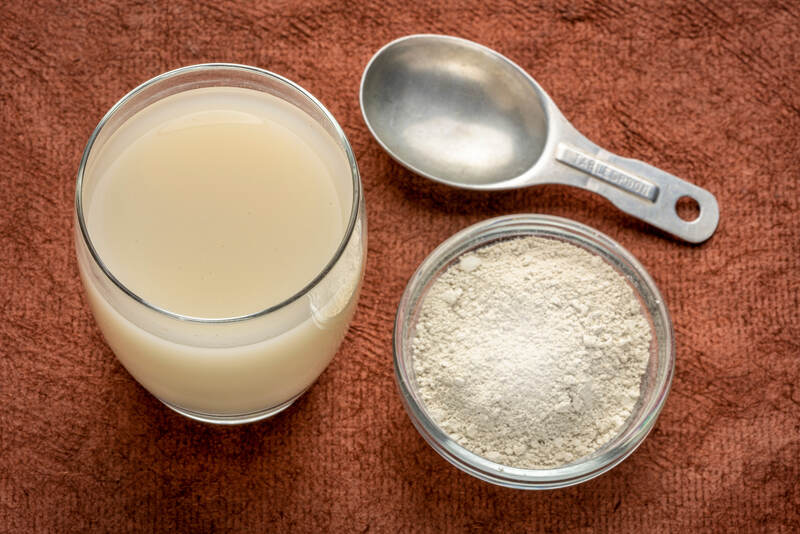
Napolski, of A-Tex Pest Management, says a liquid solution can help distribute diatomaceous earth more evenly over a larger area, but it is not immediately effective in its wet state.
“When applied with water, it will settle onto surfaces and only becomes active once the moisture evaporates and the powder dries out,” says Napolski. He adds that diatomaceous earth may take longer to dry in areas with frequent rain or high humidity, reducing its effectiveness.
What you need:
- Water
- Diatomaceous earth
- Sprayer bottle
Steps to follow:
- Add 4 tablespoons of diatomaceous earth to 1 gallon of water to make a flea spray. Mix thoroughly, then transfer the solution to a spray bottle.
- Locate the areas where you suspect a flea population is thriving.
- Spray over the infested area. Agitate the bottle occasionally to mix the solution.
How Does Diatomaceous Earth Kill Fleas?
Diatomaceous earth damages the insect’s exoskeleton and kills the flea by desiccation.
Fleas have their bodies covered in a lipid layer called a cuticle or exoskeleton. It’s like a suit of armor that protects the fleas from injury, diseases, and dry air. Diatomaceous earth clings to this suit and destroys its waxy layer, leaving the flea’s body exposed to the elements.
“All [diatomaceous earth] particles contain very small inner pores which have the physical ability to absorb wax (lipids) molecules from the epicuticle of insects,” says Dr. Zlatko Korunic, a diatomaceous earth expert at Diatom Research and Consulting Inc. in Toronto, Canada.
The sharp silica particles further damage the cuticle by abrasion. As a result, the insect loses water, and the flea dies.
Key takeaways on diatomaceous earth:
- It is a mechanical insecticide (it causes physical damage), not a chemical one, so insects can’t develop immunity.
- It can kill various insects, including ticks, bed bugs, cockroaches, mites, spiders, and ants, and repel garden pests such as aphids, snails, and slugs.
FAQ
Diatomaceous earth kills exposed fleas in a few hours to a day. However, it takes weeks to control an entire flea infestation.
When using inside the house, apply diatomaceous earth to carpets, pet bedding, cracks and crevices, and spots where your cat or dog spends time, such as on or behind the sofa. Before treating textile materials, give them a good vacuum to get the fleas moving and make them easier to cover in the white dust.
While diatomaceous earth is safe to use on pets, many veterinarians advise against pet owners spreading the powder directly on the pet’s skin because it can cause irritation.
Alternative treatments include flea collars, pills, and liquid medicine. A flea comb can also remove flea dirt from your pet’s fur. Diatomaceous earth is better for killing fleas on pet bedding and in their outdoor hiding places.
Put Fleas On the Run!
Act before a small flea problem becomes a full-scale invasion. Contact a pest control professional through LawnStarter and get your yard treated for fleas.
LawnStarter pros can also help you keep the yard neat and less attractive for fleas with spotless lawn mowing, stylish bush trimming, and thorough yard cleanups.
Sources:
- Bunch, T. R., Bond, C., Buhl, K., Stone, D. (2013). Diatomaceous Earth General Fact Sheet. National Pesticide Information Center, Oregon State University Extension Services. http://npic.orst.edu/factsheets/degen.html
- Giedt, E.J., (2017, February). Flea Control. Oklahoma State University. https://extension.okstate.edu/fact-sheets/flea-control.html
- Korunić, Z. (2013, January). Diatomaceous Earths – Natural Insecticides. Pesticidi i fitomedicina. 28(2):77-95. DOI: 10.2298/PIF1302077K
Main Image Credit: MarekPhotoDesign.com / Adobe Stock Free / License
